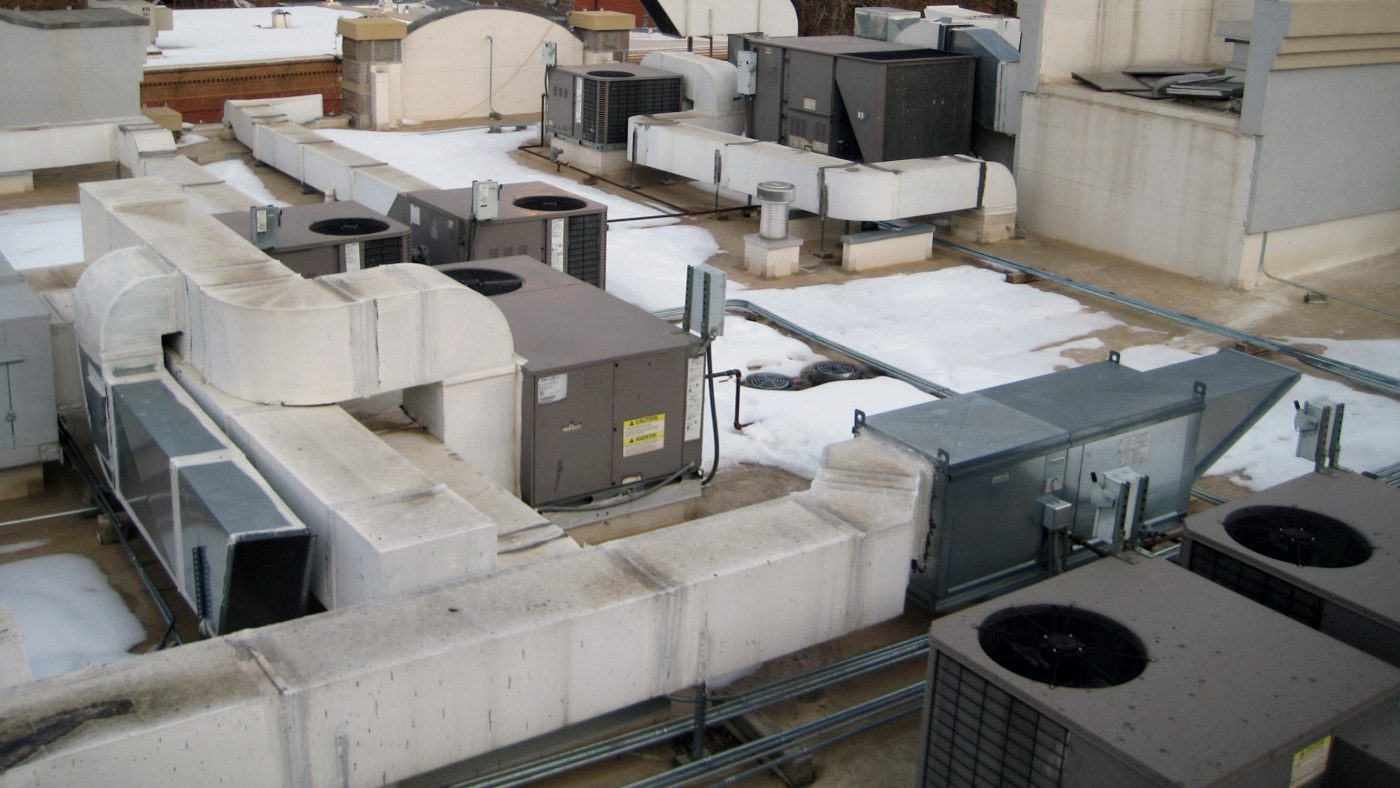Discussing the CDC and ASHRAE Recommendations for HVAC Systems in Non-Healthcare Buildings
Everyone has been wondering when we will get back to a sense of normalcy but COVID-19 continues to be a challenging and moving target. While many experts do not agree as to when we will get to leave this phase of self-isolation, we know at some point it will happen. As the world starts to think about reopening businesses, many people’s thoughts now shift to the potential airborne transmission once we step inside of them.
In part one of this three-part series, we will discuss what both the Centers for Disease Control (CDC) and the American Society of Heating, Refrigeration, and Air-Conditioning Engineers (ASHRAE) say regarding modifying heating, ventilation and air conditioning (HVAC) systems to better deal with the COVID-19 pandemic. Future parts of this series will discuss each of the specific guidelines and the research and analysis that should be done to existing buildings before implementation to avoid any potential issues down the road.
Current CDC and ASHRAE Guidelines
Current guidelines from both the CDC and ASHRAE appear to be to reduce disease transmission by airborne particles by primarily increasing outdoor air ventilation and filtration efficiency; however, the detail on how to best achieve this is vague to say the least. These recommendations appear to take a “one approach for all” method but do not consider the location and climate these facilities are located in. A facility located in Boston, for example, should not be designed the same as Miami. Weather, and more importantly, moisture in outdoor airflow is drastically different, particularly in the southern, warmer climates. Therefore, what may work for one location may not work the same for another.
CDC Guidelines
CDC guidelines as they relate to modifying HVAC systems to handle the COVID-19 pandemic state as follows [1]:
Consider improving the engineering controls using the building ventilation system. This may include some or all of the following activities:
- Increase ventilation rates.
- Increase the percentage of outdoor air that circulates into the system.
ASHRAE Guidelines
According to their website [2], “ASHRAE has developed proactive guidance to help address coronavirus disease (COVID-19) with respect to the operation and maintenance of heating, ventilating and air-conditioning systems.” Their webpage lists a number of links to other websites and papers as well as publications of their technical standards. Some of which is discussed below.
ASHRAE has established an epidemic task force to respond to the global COVID-19 pandemic [3]. On the recommendation of the ASHRAE Epidemic Task Force, ASHRAE leadership has approved the following two statements regarding transmission of SARS-CoV-2 and the operation of HVAC systems during the COVID-19 pandemic [4]:
Statement on airborne transmission of SARS-CoV-2:
Transmission of SARS-CoV-2 through the air is sufficiently likely that airborne exposure to the virus should be controlled. Changes to building operations, including the operation of heating, ventilating, and air-conditioning systems, can reduce airborne exposures.
Statement on operation of heating, ventilating, and air-conditioning systems to reduce SARS-CoV-2 transmission:
Ventilation and filtration provided by heating, ventilating, and air-conditioning systems can reduce the airborne concentration of SARS-CoV-2 and thus the risk of transmission through the air. Unconditioned spaces can cause thermal stress to people that may be directly life threatening and that may also lower resistance to infection. In general, disabling of heating, ventilating, and air-conditioning systems is not a recommended measure to reduce the transmission of the virus.
ASHRAE also released a position document (PD) titled “ASHRAE Position Document on Infectious Aerosols.” [5] This document primarily discusses approaches to mitigate airborne transmission of infectious diseases in healthcare facilities but recognizes infections are also transmitted in non-healthcare occupancies. It is assumed that most healthcare facilities have emergency response plans; however, it is likely that many non-healthcare facilities do not.
Although ASHRAE provides general recommendations and air quality requirements in Standards 62.1, 62.2 and 170; “ASHRAE does not provide specific requirements for infectious disease control in homes, schools, prisons, shelters, transportation, or other public facilities.” [6] However, the PD does discuss ASHRAE’s position for non-healthcare buildings related to HVAC design and operation strategies which should be considered. These strategies, which are similar to their strategies for all building types, include the following [7]:
- Increase outdoor air ventilation (disable demand-controlled ventilation and open out-door air dampers to 100% as indoor and outdoor conditions permit).
- Improve central air and other HVAC filtration to MERV-13 (ASHRAE 2017b) or the highest level achievable.
- Keep systems running longer hours (24/7 if possible).
- Add portable room air cleaners with HEPA or high-MERV filters with due consideration to the clean air delivery rate (AHAM 2015).
- Add duct- or air-handling-unit-mounted, upper room, and/or portable UVGI devices in connection to in-room fans in high-density spaces such as waiting rooms, prisons, and shelters.
- Maintain temperature and humidity as applicable to the infectious aerosol of concern.
- Bypass energy recovery ventilation systems that leak potentially contaminated exhaust air back into the outdoor air supply.
CDC and ASHRAE Consensus
The general consensus from both the CDC and ASHRAE appears to be that increasing both ventilation and filtration can reduce the risk of COVID-19 airborne transmission. This consensus appears to be based on reasonable assumptions based on available data, some of which have not yet been validated. While some of these recommendations may be able to be implemented with little to no effect on the current HVAC systems, one should not simply take generally made recommendations as a solution for all situations without fully understand the costs and effects these recommendations may have on their specific systems before implementing them.
In part two of this series, we will focus on the topic of increased ventilation which is one of the main recommendations from both the CDC and ASHRAE guidelines with regards to HVAC systems handling of COVID-19.
To learn more about VERTEX’s COVID-19 Services and Industrial Hygiene & Building Sciences services or to speak with an Environmental Expert, call 888.298.5162 or submit an inquiry.




